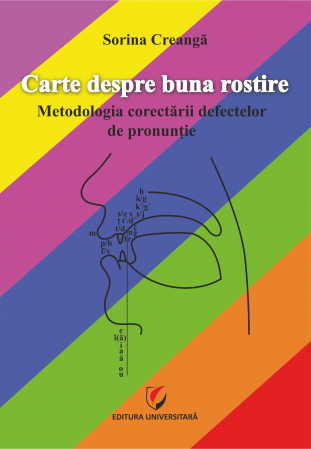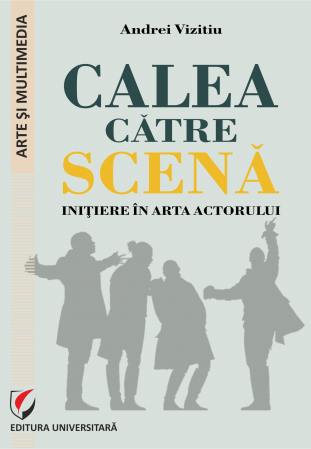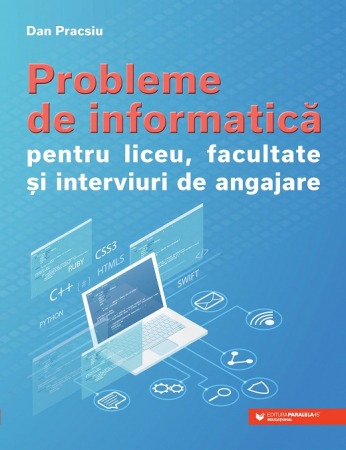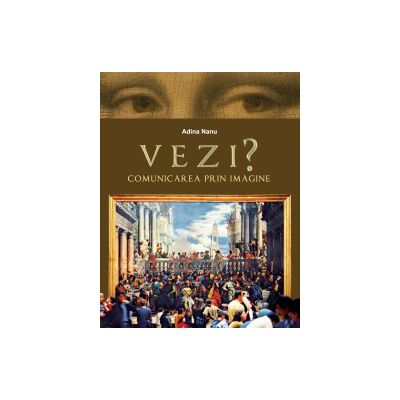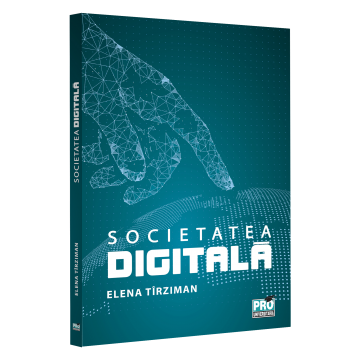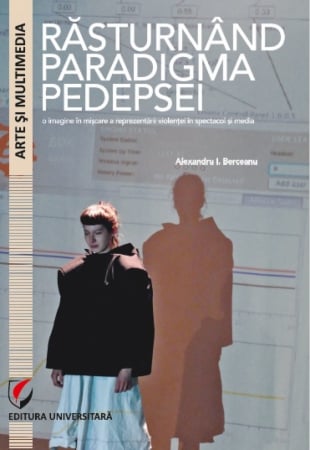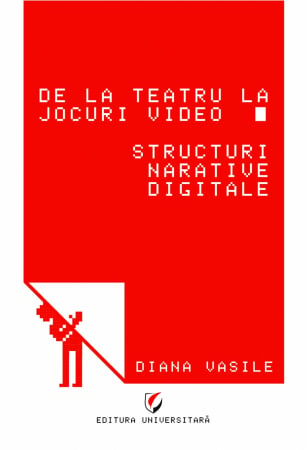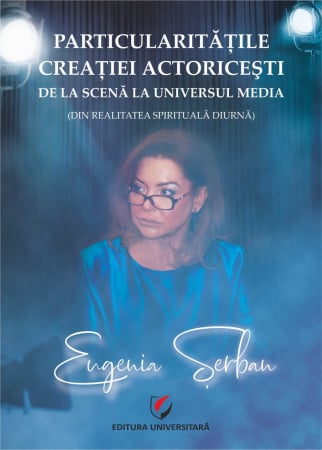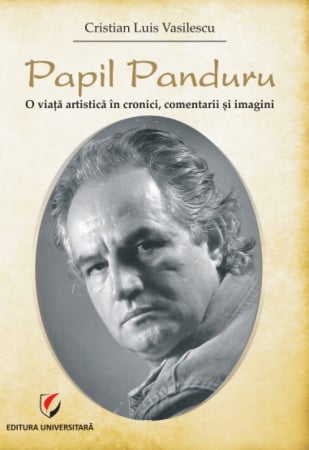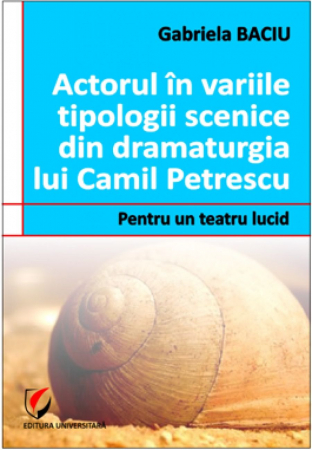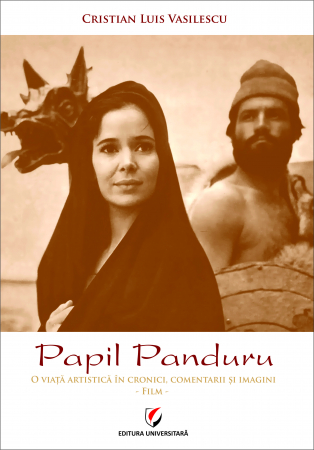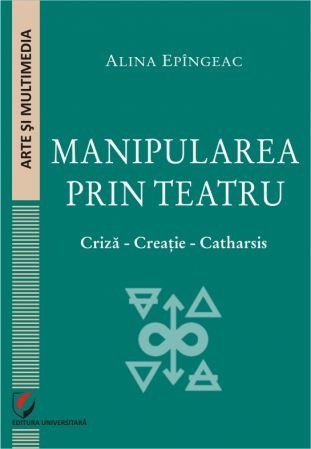ISBN: 978-606-28-0892-1
DOI: 10.5682/9786062808921
Publisher year: 2019
Edition: I
Pages: 176
Publisher: Editura Universitara
Author: Alexandru Maftei
- Description
- Download (1)
- Authors
- Content
- More details
- Where to find it
- Reviews (0)
This paper aims to dismantle this interdisciplinary process in its simplest and most intimate elements. I will try to find out how the narrative skeleton is found in the two different environments of expression and how the representation of space and time manifests itself specifically in the written text and in the cinematic discourse. The point of view is of a practicing film director who wants to theorize this process which, most of the time, is surrounded by the mysterious aura of a black box in which a script enters and from which a film emerges.
What is in this black box, what mechanisms, what springs, what horses - I will try to explore using studies of narratology, cinema and visual expression, theorizing of some important directors and putting the magnifying glass in the light of these writings of own films and working methods. I will try to question myself in terms of a number of directorial choices made instinctively, hot, on the set or during the period of intense preparation of the films I made.
My theoretical study goes mainly in two directions: to understand the narrative text and its elements - on the one hand - and to define the elements of film visuality that are available to the filmmaker to put on the page a narrative text, on the other part. The specific way in which space and time are represented in the narrative script and in the film offers certain bridges of transformation that the director can discover through analysis and on which his creation is later based.
-
CUTIA NEAGRA A REGIZORULUI
Download
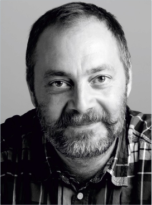
ALEXANDRU MAFTEI (b. May 10, 1970, Bucharest) graduated from the Bucharest Academy of Theater and Film (currently UNATC I.L. Caragiale) in 1994 - the first generation of post-December film directors. The diploma film "Every day is night" (1994) beat the world of international film festivals, returned with awards and was broadcast by the television station Arte. His filmography includes the television feature film "Be on the lookout for happiness" (1998) in which he was also co-writer, seven of the 14 episodes of the Romanian series "Lombarzilor 8" (2006), the bittersweet sweet comedy "Hello! What are you doing?" (2011) cataloged by Variety magazine as a breath of fresh air in the context of gloomy Romanian cinema and sold in over 20 territories around the world, "Miss Christina" (2013) a film adaptation of the novel of the same name by Mircea Eliade. Alexandru is one of the most experienced advertising directors, with countless international awards. Since 2013 he has been staging shows in independent and state theaters in Bucharest, Timișoara and Arad. In 2017 he obtained a doctorate in visual arts at the National University of Arts in Bucharest. A complete portfolio of works can be found on the website www.AlexandruMaftei.com.
Introduction / 9
Chapter I
Elements and layers of the narrative text / 15
1.1. Narrative material: events, actors and place / 18
1.2. Narrative discourse / 27
1.2.1. Selection and ordering of events / 27
1.2.2. Story speed / 29
1.2.3. Rhythm and frequency / 33
1.2.4. Narrative modes / 34
1.2.5. Focusing / 36
1.2.6. The time used in the story / 38
1.2.7. Narrative levels / 39
1.3. Narrative media / 41
1.4. A look at visual narrative / 46
Chapter II
Film view / 53
2.1. Representation of space in film / 53
2.1.1. The. The field and the extra field. Frame composition. Plan / 54
2.1.2. Perspective. Point of view / 65
2.1.3. Depth / 7
2.1.4. Miscare / 71
2.1.5. Sound / 73
2.2. Representation of time in the film / 75
2.2.1. Assembly / 76
2.3. Representation of reality or creation of an imagined world / 82
2.4. The phenomenon of spectator identification with the film / 85
Chapter III
From screenplay to film through directorial analysis and storyboarding / 90
3.1. Screenplay and storyboard - transitional forms to film / 90
3.2. Analysis of the script to be made film / 95
3.3. A series of directorial elections / 102
3.4. The visual concept - definition and proportion of its elements / 106
3.4.1. Scenographic space / 107
3.4.2. The characters / 111
3.4.3. Mizanscena / 113
3.4.4. Cutout / 115
3.4.5. Framing / 116
3.4.6. Photography / 117
3.4.7. The sound / 118
Chapter IV
Discovering the personal path to a filmic vision / 121
4.1. Introduction to an intimate laboratory / 121
4.2. Analysis and creation in the discovery of the visual core for two narrative feature films / 128
4.2.1. Discovering and developing the visual concept of the film Hello! What are you doing? / 128
4.2.2. Discovering the filmic visuality starting from the short story Miss Christina by Mircea Eliade / 148
4.3. Discovering a life story based on the works of Storck artists and converting it into a film visual / 161
Conclusions / 169
Bibliography / 171
Name index / 175
This paper aims to dismantle this interdisciplinary process in its simplest and most intimate elements. I will try to find out how the narrative skeleton is found in the two different environments of expression and how the representation of space and time manifests itself specifically in the written text and in the cinematic discourse. The point of view is of a practicing film director who wants to theorize this process which, most of the time, is surrounded by the mysterious aura of a black box in which a script enters and from which a film emerges.
What is in this black box, what mechanisms, what springs, what horses - I will try to explore using studies of narratology, cinema and visual expression, theorizing of some important directors and putting the magnifying glass in the light of these writings of own films and working methods. I will try to question myself in terms of a number of directorial choices made instinctively, hot, on the set or during the period of intense preparation of the films I made.
My theoretical study goes mainly in two directions: to understand the narrative text and its elements - on the one hand - and to define the elements of film visuality that are available to the filmmaker to put on the page a narrative text, on the other part. The specific way in which space and time are represented in the narrative script and in the film offers certain bridges of transformation that the director can discover through analysis and on which his creation is later based.
Using intermediate visual manifestations such as the storyboard, the set sketches or the place map, the director clarifies his concept that will govern the space and time in the universe of the story he has to tell. This thought process feeds on knowledge in the field of narratology, visual arts, psychology and film aesthetics. Cinema, as an art that appeared relatively recently in the history of humanity, incorporates a good part of the principles that govern the visual arts and the art of storytelling.
The study of the two directions - the narrative and the visual - and of the network of elements that unites them is completed by a detailed, retroactive analysis of the process of transforming two narrative scenarios into films. These are two feature films: Hello! What are you doing? (2011) and Miss Christina (2013) which I directed. Using the sketches, photographs and storyboard that formed the basis of the metamorphosis of the two scenarios to film vision as well as frames captured from those films, I tried to reconstruct my own path of artistic creation using the notions of narratology and visual expression studied. These thoughts and reflections had as a starting point some articles I wrote for magazines such as Contrapunct or Decat o Revista, but also discussions - unexpectedly detailed sometimes - that I had after screening my films at various festivals. international film with the cinephile audience.
I took a somewhat reversed path in terms of making the film La un pas de eternitate (2016) which started from the visual world of the Storck house-workshop-museum to the crystallization of a screenplay and then a documentary film that evokes a dialogue between painting, sculpture and architecture through the work of the two artists - Frederic Storck and Cecilia Cutescu Storck. To this dialogue between the arts I tried to join the film with its music.
The first chapter of the paper defines the layers of the narrative text and the elements of the narrative. Starting from the narratological concepts developed by theorists such as Gérard Genette in the field of literature and from their extensions in the field of film and visual arts proposed by authors such as Roland Barthes, Seymour Chatman, Scott McCloud, Markus Kuhn, Dumitru Carabat or Mieke Bal, my searches it is heading towards the crystallization of an analysis and expression tool that will allow the director in front of a script or another narrative text that is to be transformed into a film, to be able to structure and organize his creative work.
The narrative text is analyzed from three points of view. The first concerns the narrative material which is composed of events, actors, place and time. The next layer is about narrative discourse, that is, how narrative material is manipulated. The selection and ordering of events, the speed of storytelling, the rhythm, the various types of focus are the elements of narrative discourse. The third layer refers to the media used to tell the story and its various specific features. Here I will investigate the differences between narrative media and the ability of visual media to sustain a narrative.
The second chapter of the book will begin with an analysis of how space and time are represented in film. The elements of film vision such as framing, composition, perspective, depth of field, camera movement, soundtrack, editing, connection are defined and analyzed following the writings of theorists such as Jean Mitry, Rudolf Arnheim, André Bazin, Roland Barthes, Jacques Aumont, Alain Bergala, Michel Marie, Marc Vernet, Michel Chion or Gilles Deleuze but also studying written texts or interviews with directors such as Andrei Tarkovski, Federico Fellini, Ingmar Bergman, Lucian Pintilie or Krzystof Kieślowski.
The bipolarity of cinema revealed since its beginnings by the two pioneers of this art, Lumière and Méliès, namely cinema as a faithful representation of reality and cinema as a means of constructing an imagined world are two trends that tend to be nuanced today. And the director's choice of one path or the other has major consequences on how cinematic means of expression will be used and dosed.
The theory of the double identification of the cinema spectator proposed by Jean-Louis Baundry or the theorizing of the function of the gaze as object of Jacques Lacan offers some profound perspectives that explain the huge force of fascination of cinema, questioning the responsibility of the filmmaker.
The third chapter of the work is dedicated to the metamorphosis of the script towards the filmic visuality through the directorial analysis, the sketches and the storyboard. The storyboard - like the screenplay - is born as a form of transient expression of the film's subject in the sense that it exists only to witness the embodiment of the future film and somehow ends its usefulness after the film's production process is over.
The first step in metamorphosing the script into a storyboard is to define a visual concept that is appropriate to the theme of the script. This visual germ must be strong, as unique as possible and able to be developed in a series of variations that can cover the entire narrative material in the script. This visual concept springing from the theme and subject of the script can be defined as a complex of elements: a positioning in relation to the representation of reality and the manipulation of the imaginary, a key to focus, a kind of discourse - all with direct implications on the style of staging, cutting, framing, acting, lighting, editing, coloring and design of the soundtrack.
The first sequences in the script that are drawn in the form of a storyboard are the key ones: the beginning, the confrontation, the end. They constitute the nodal points in the scenario and practically the visuality expressed here will be like a kind of matrix applied to the whole.
The fourth chapter of the work tries to order according to the principles stated above a part of my own directing experience, more precisely the one referring to the most recent two feature films I have directed as well as the special process of making a poetic documentary about the works of artists Storck.
The visual concept of the movie Hello! What are you doing? it will be extensively exposed using the storyboard and sketches made before the filming and the frames from the final film. The visual evolution of the texts that the two main characters of the film change through chat on the computer will be the subject of a subchapter of my presentation.
The development of a filmic vision starting from the fantastic short story Miss Christina by Mircea Eliade posed completely different problems and required a different approach. The way in which Christina's ghostly character was to come to life in the film was the starting point in the process of visualizing the script.
The plastic embodiment of a book universe in the opening and closing sequences of the film (which were added to Eliade's short story, but shaped from an extension of the narrative material provided by the author) will also be exposed in detail. The visual thinking applied to the narrative script will find its reverse in the way the film One step away from eternity (2016) was conceived and made, starting from the sculpture and painting works of the artists Frederic and Cecilia Cutescu Storck hosted by the house-workshop- their museum.
My book aims to make visible the roots of the narrative art of film in the visual arts and the art of storytelling, combining theoretical study with cinematic practice and personal reflection on this complex process of metamorphosis that is the making of a film.
Customer Support Monday - Friday, between 8.00 - 16.00
0745 200 718 0745 200 357 comenzi@editurauniversitara.ro
6359.png)
![The Director's Black Box - Alexandru Maftei [1] The Director's Black Box - Alexandru Maftei [1]](https://gomagcdn.ro/domains/editurauniversitara.ro/files/product/large/cutia-neagra-a-regizorului-168-338164.jpg)
